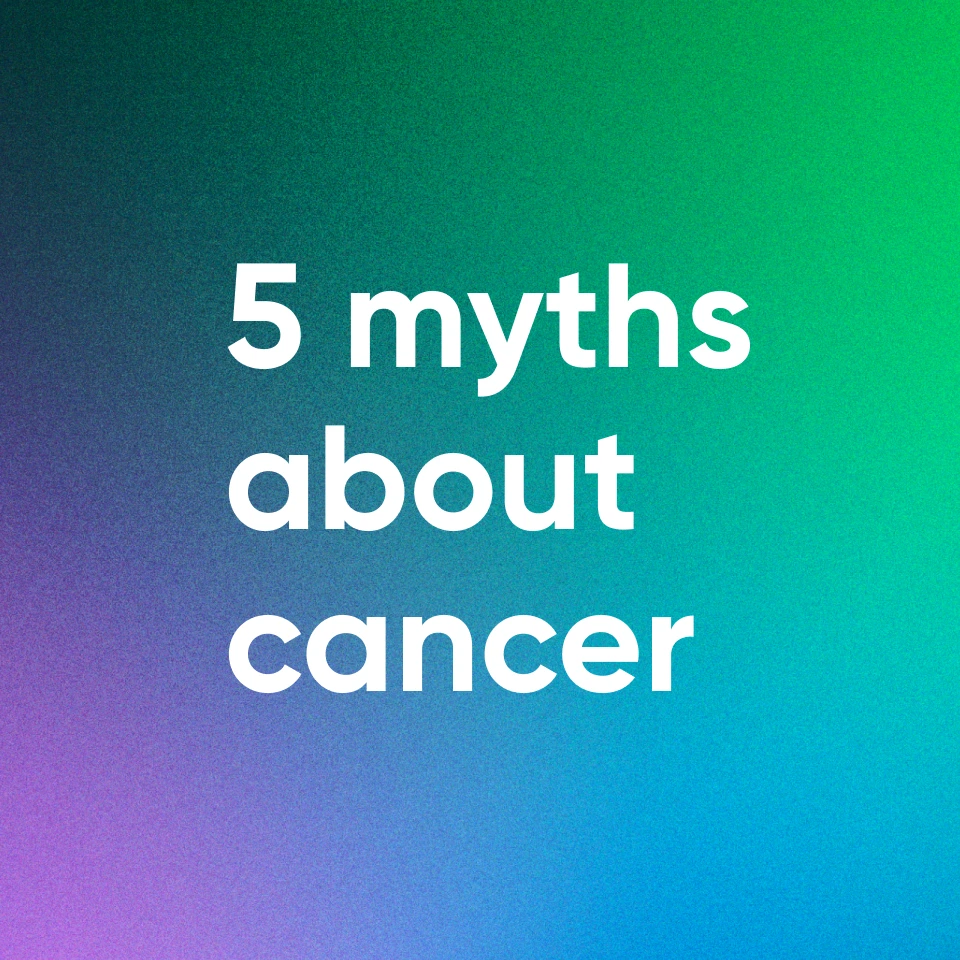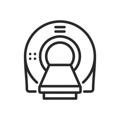Cancer is one of the most feared words in medicine, and for good reason. It touches nearly every family, creates enormous anxiety, and often feels random or unfair. Add to that the constant swirl of advice and scary headlines, it’s no wonder cancer prevention may feel a bit confusing.
The truth is, while science has made major strides in understanding risk, misinformation may still linger. And when people rely on myths instead of facts, they can delay screenings, dismiss early warning signs, or miss opportunities for proactive care. Let’s clear the air on some of the most common cancer prevention myths and highlight what really matters.
Related: Early detection cancer screenings aren’t just for high-risk people
Myth 1: “If cancer runs in my family, I’m at risk. If it doesn’t, I’m safe.”
What the myth gets wrong: Family history is important, but it may only tell only part of the story. In fact, only about 5–10% of cancers are hereditary. The vast majority arise from a mix of environmental exposures, random genetic mutations, and lifestyle factors that can affect anyone.
The truth: Many people diagnosed with cancer have no family history of the disease. For example, more than 80% of breast cancer cases occur in women with no known family history. Relying on family history alone creates a false sense of security—or unnecessary fear.
A better approach: Know your family history, yes, but don’t stop there. Everyone has some level of cancer risk, regardless of their genes. The smartest step is layering prevention strategies: follow age-appropriate screenings, reduce modifiable risks (like smoking), and consider comprehensive approaches like whole body MRI, which can help reveal conditions that family history and routine tests may miss.
Myth 2: “I’ll feel symptoms if something’s wrong.”
What the myth gets wrong: Symptoms are not an early warning system for most cancers. Many types—including pancreatic, kidney, liver, ovarian, and brain cancers—can grow silently for years before causing noticeable signs. By the time symptoms appear, the disease may already be advanced.
The truth: For many cancer types in the U.S., a substantial share of cases are diagnosed at regional or distant stages — meaning the disease has already spread beyond its primary site. At that point, treatment options are more limited and survival rates drop significantly. Symptoms like unexplained weight loss, fatigue, or persistent pain often show up late in the process.
A better approach: Don’t wait for your body to “tell” you something’s wrong. Stay current with standard screenings, like mammograms, colonoscopies, and Pap smears, and remember that these cover only a handful of cancer types. For a more complete picture, imaging and blood-based tests can help reveal what symptoms might miss.
Myth 3: “Screenings are only necessary after 40.”
What the myth gets wrong: Age-based guidelines are helpful, but they don’t capture the whole story. Cancer doesn’t check your birthdate before it develops—and some of the most aggressive cancers are being diagnosed in people under 40.
The truth: In the U.S., for people ages 20-39, cancer is among the top 5 causes of death; among females in this age range, it’s the leading cause of death from disease. Rates of colorectal cancer, melanoma, and certain breast cancers in younger adults are rising. While most official screening programs begin in midlife, waiting until 40 or 50 to think about cancer risk leaves a blind spot for younger people.
A better approach: Screenings should be risk-based, not just age-based. Family history, genetic predisposition, lifestyle factors, and unexplained symptoms all matter. Even if you’re under 40, it’s worth having a conversation with your doctor about your personal risk profile.
Myth 4: “Lifestyle alone can prevent cancer.”
What the myth gets wrong: Healthy habits matter, but they aren’t a guarantee. Eating well, exercising, and limiting alcohol and tobacco lower your risk—but they don’t eliminate it. Some cancers develop because of factors you can’t control, such as random genetic mutations, environmental exposures, or simply the biology of aging.
The truth: Research suggests that up to 42% of cancers may be preventable through lifestyle changes. That still leaves more than half of cancers driven by factors outside of diet, fitness, or stress management. Stories of marathon runners or non-smokers facing unexpected diagnoses are stark reminders that lifestyle is protective, but not protective enough.
A better approach: Keep prioritizing healthy habits—they truly stack the odds in your favor. But don’t assume they make you invincible. A balanced strategy pairs lifestyle with vigilance: regular checkups, guideline-based screenings, and proactive tools like whole body MRI and blood biomarker testing. These layers together help ensure you’re not relying on lifestyle alone to stand between you and cancer.
Myth 5: “One test is enough.”
What the myth gets wrong: No single test can catch every type of cancer. Standard screenings—like mammograms, Pap tests, and colonoscopies—cover a handful of cancers. That leaves other cancer types outside the scope of routine screening.
The truth: Only about 14% of cancers in the U.S. are detected through recommended screening tests. That means most cancers are found either incidentally or after symptoms develop. Relying on one test—or even a set of guideline-based tests—creates potentially significant blind spots.
A better approach: Think of cancer prevention as a toolkit, not a single instrument. Standard screenings remain essential and should never be skipped as they are proven, lifesaving tools for the cancers they target. But because they cover a fraction of cancer types, many people are now layering additional methods, such as genetic testing, bloodwork, or advanced imaging, to get a more complete picture. Whole body MRI, for example, is designed to complement, not replace, routine screenings by looking across multiple organs and systems, offering another vantage point that can help catch what might otherwise be missed.
The final truth
Cancer prevention isn’t about silver bullets, it’s about stacking small advantages. Family history, lifestyle choices, and regular screenings all matter, but none of them tell the full story on their own.
The better approach is to think in layers. Stay current with guideline-based screenings, pay attention to your health habits, and where appropriate, consider additional tools that can help provide a broader view of your body. No one can erase risk entirely, but with clearer information, you could shift the odds in your favor and act sooner rather than later.
To learn more about the benefits of whole body MRI and a Prenuvo Whole Body Scan, book a call with a member of our care team.





.webp)


